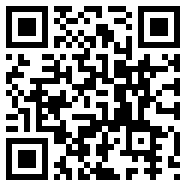湖南智能美彙網絡科技有限公司
- 營業執照:91421303MA4930PG97
- 備案号碼:京ICP證000000号
- 地(dì / de)址:湖北省随州市曾都區北郊明珠路59号
聯系我們
- 電話:188 7112 2111
- 郵箱:8085223@qq.com
- Q Q:8085223

掃一(yī / yì /yí)掃 手機訪問
熟知排名算法,快速提升網站轉化率
TAG标簽是(shì)由我們自己定義的(de),而(ér)且分類更具體也(yě)更準确,還可以(yǐ)概 括文章主要(yào / yāo)内容的(de)關鍵詞。而(ér)且TAG标簽和(hé / huò)關鍵詞有着同等的(de)重要(yào / yāo)地(dì / de) 位。其分别就(jiù)是(shì),關鍵詞是(shì)給搜索引擎看的(de),而(ér)TAG标簽是(shì)針對浏覽 者針對用戶的(de)。現在(zài)營銷網站建設公司湖北衆廣網絡就(jiù)來(lái)說(shuō)說(shuō)怎樣優化網站的(de)TAG标簽;
The TAG tag is defined by our own, and more specific classification more accurate, can generalize the main content of the article keywords. And TAG tags and keywords are important bits equal. Its are respectively, keywords to search engine, and TAG tags for browsing for users of the. Now the marketing type website construction company luxuries China to talk about how to optimize the site TAG tag;
一(yī / yì /yí)、 一(yī / yì /yí)篇文章的(de)TAG标簽最好設置在(zài)三個(gè)左右,不(bù)宜過多;
An article in the TAG tag is best arranged in three or so, not too much;
二、明确标簽是(shì)爲(wéi / wèi)了(le/liǎo)方便用戶而(ér)設置的(de)。
The label is provided for the convenience of the user.
三、最好設置成與文章内容相關而(ér)且又是(shì)網站的(de)關鍵詞。
The best settings and content relevant and is the site of the key words.
其實,并不(bù)是(shì)所有的(de)網站建設都适合做TAG标簽的(de),因爲(wéi / wèi)行業不(bù)同和(hé / huò) 類型不(bù)同,所以(yǐ)最後的(de)結果也(yě)是(shì)不(bù)同的(de)。我們都知道(dào),由于(yú)網站的(de) 類型不(bù)同,搜索引擎的(de)規則和(hé / huò)收錄也(yě)是(shì)不(bù)太一(yī / yì /yí)樣的(de)。所以(yǐ)說(shuō),那些 行業站,門戶站之(zhī)類的(de)網站還是(shì)更加适合做TAG标簽的(de)。
In fact, not all websites are suitable for TAG tags, because of the different industry and different types, so the end result is different. As we all know, because the website of different types, the rules of search engine and collection is not the same. Therefore, the industry station, portal websites such as or more suitable for TAG tags.
怎樣對關鍵詞進行分析
How to analyze the key words
各位站長都知道(dào),網站優化要(yào / yāo)做的(de)好,首先關鍵詞要(yào / yāo)選好。有 了(le/liǎo)好的(de)關鍵詞就(jiù)可以(yǐ)讓我們的(de)優化工作更加有效率。今天就(jiù)來(lái)說(shuō)說(shuō) 怎樣對關鍵詞進行分析。
You know that the webmaster, site optimization to do good, first of all keywords to select. Today to talk about how to analyze the key words.
1、要(yào / yāo)站在(zài)用戶的(de)角度考慮,了(le/liǎo)解用戶的(de)需求。這(zhè)個(gè)在(zài)百度的(de)相 關搜索裏面就(jiù)可以(yǐ)了(le/liǎo)解到(dào)用戶的(de)需求,可以(yǐ)看到(dào)用戶想要(yào / yāo)了(le/liǎo)解什麽 信息。
To stand in the user's perspective, understanding the needs of users. This correlation in Baidu search inside the will be able to understand the needs of users, can see the user wants to know what information.
2、關鍵詞的(de)數量。一(yī / yì /yí)般網站有三四個(gè)關鍵詞就(jiù)可以(yǐ)了(le/liǎo),如果關 鍵詞太多的(de)話,相關性也(yě)會分散,要(yào / yāo)想将多個(gè)關鍵詞坐上(shàng)去的(de)話,所投入的(de)時(shí)間和(hé / huò)精力也(yě)是(shì)很大(dà)的(de),而(ér)且效果還不(bù)會特别好。
The number of key words. General site has three or four key, if too many key word, correlation will be dispersed, to multiple keywords sat up, the investment of time and energy is great, but the effect is not very good.
3、關鍵詞熱度的(de)分析。我們選擇的(de)關鍵詞不(bù)能太熱門,如果太 熱門我們也(yě)不(bù)容易做上(shàng)去,這(zhè)樣的(de)關鍵詞競争太激烈了(le/liǎo)。但是(shì)我們 選擇的(de)關鍵詞也(yě)不(bù)能太冷門,太冷門的(de)關鍵詞即使是(shì)做上(shàng)去了(le/liǎo)也(yě)很 少會有人(rén)搜索,所以(yǐ)要(yào / yāo)選擇不(bù)是(shì)太熱門而(ér)且又有一(yī / yì /yí)定搜索量的(de)關鍵詞。
Keywords heat analysis. Our choice of words can not be too hot, too hot we also is not easy to do up, this keyword competition too intense. But we chose the keywords can not be too upset, too unpopular keywords even make up is also very few people will search, so choose not too hot and there are some key words search volume.
本文發布于(yú)湖北衆廣網絡集團網站建設服務商/
上(shàng)一(yī / yì /yí)篇:網站優化的(de)前進趨向和(hé / huò)seo的(de)遠景
下一(yī / yì /yí)篇:SEO結合營銷型網站之(zhī)産品頁優化技巧